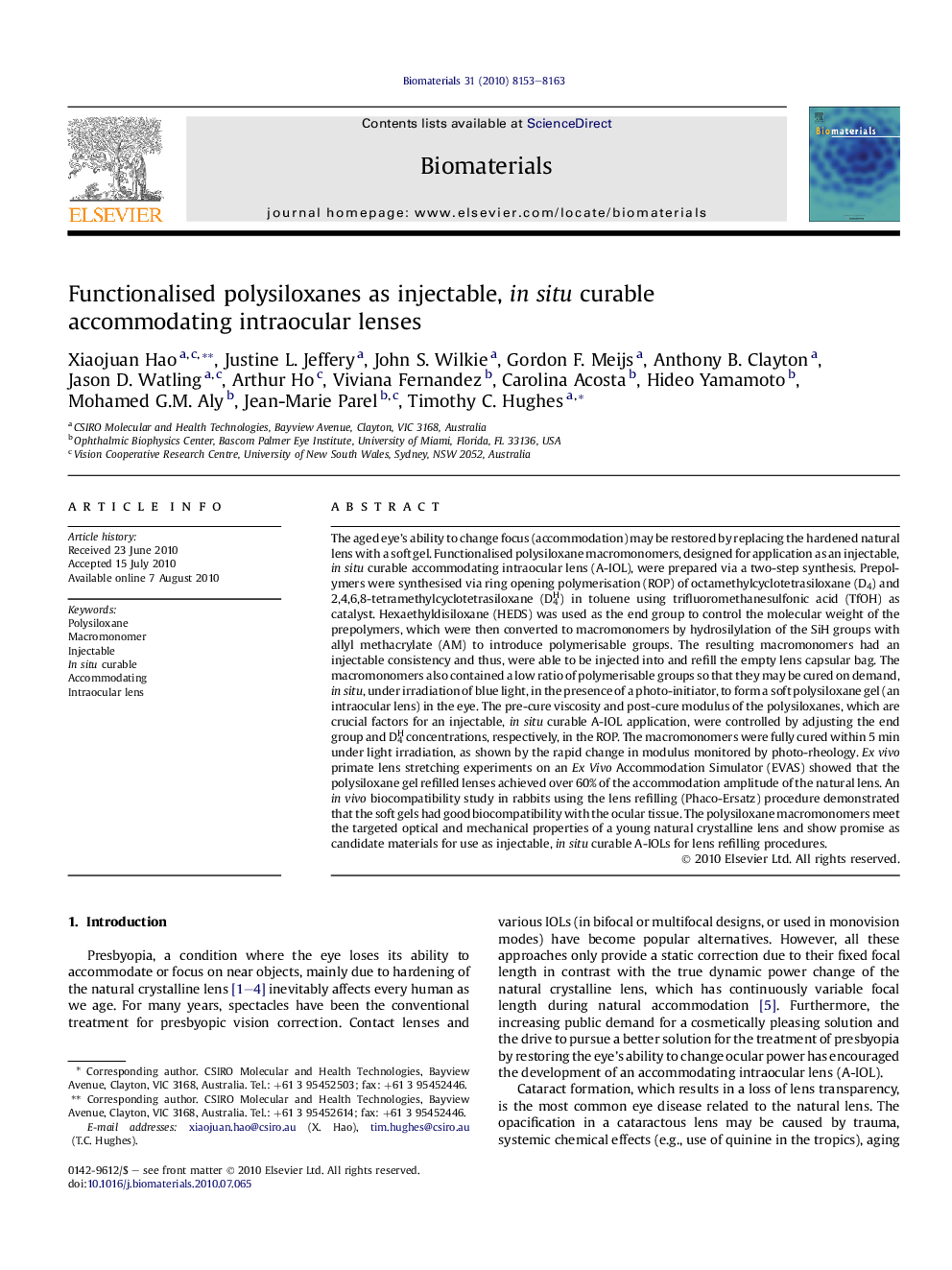| کد مقاله | کد نشریه | سال انتشار | مقاله انگلیسی | نسخه تمام متن |
|---|---|---|---|---|
| 7935 | 570 | 2010 | 11 صفحه PDF | دانلود رایگان |

The aged eye’s ability to change focus (accommodation) may be restored by replacing the hardened natural lens with a soft gel. Functionalised polysiloxane macromonomers, designed for application as an injectable, in situ curable accommodating intraocular lens (A-IOL), were prepared via a two-step synthesis. Prepolymers were synthesised via ring opening polymerisation (ROP) of octamethylcyclotetrasiloxane (D4) and 2,4,6,8-tetramethylcyclotetrasiloxane (D4H) in toluene using trifluoromethanesulfonic acid (TfOH) as catalyst. Hexaethyldisiloxane (HEDS) was used as the end group to control the molecular weight of the prepolymers, which were then converted to macromonomers by hydrosilylation of the SiH groups with allyl methacrylate (AM) to introduce polymerisable groups. The resulting macromonomers had an injectable consistency and thus, were able to be injected into and refill the empty lens capsular bag. The macromonomers also contained a low ratio of polymerisable groups so that they may be cured on demand, in situ, under irradiation of blue light, in the presence of a photo-initiator, to form a soft polysiloxane gel (an intraocular lens) in the eye. The pre-cure viscosity and post-cure modulus of the polysiloxanes, which are crucial factors for an injectable, in situ curable A-IOL application, were controlled by adjusting the end group and D4H concentrations, respectively, in the ROP. The macromonomers were fully cured within 5 min under light irradiation, as shown by the rapid change in modulus monitored by photo-rheology. Ex vivo primate lens stretching experiments on an Ex Vivo Accommodation Simulator (EVAS) showed that the polysiloxane gel refilled lenses achieved over 60% of the accommodation amplitude of the natural lens. An in vivo biocompatibility study in rabbits using the lens refilling (Phaco-Ersatz) procedure demonstrated that the soft gels had good biocompatibility with the ocular tissue. The polysiloxane macromonomers meet the targeted optical and mechanical properties of a young natural crystalline lens and show promise as candidate materials for use as injectable, in situ curable A-IOLs for lens refilling procedures.
Journal: Biomaterials - Volume 31, Issue 32, November 2010, Pages 8153–8163